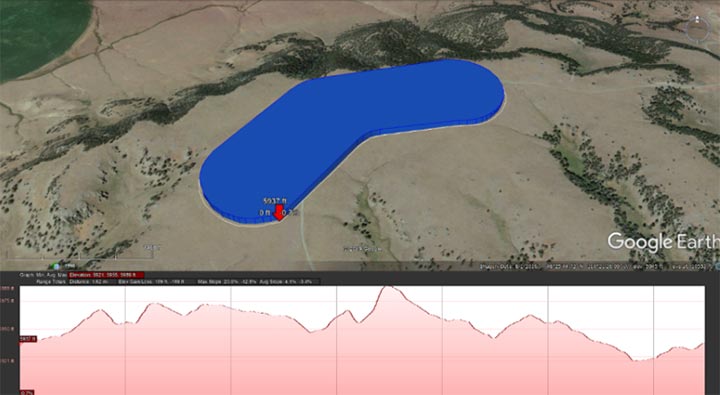Life in the FAST Lane: A Pumped-Storage Prize Progress Report
What does it take to fast-track pumped-storage hydropower (PSH) projects? Four hard-working teams of innovators may hold the answer.
In October, the U.S. Department of Energy (DOE) Office of Energy Efficiency and Renewable Energy Water Power Technologies Office awarded each of these four teams up to $500,000 in cash and support as part of the Furthering Advancements to Shorten Time (FAST) Commissioning for Pumped-Storage Hydropower Prize.
With a mission of reducing the time, cost, and risk associated with commissioning pumped-storage hydropower projects, the FAST Prize challenged competitors to cultivate new ideas, designs, and strategies to accelerate PSH development and reduce commissioning time from the current 10 years to less than five.
The following is a rundown of the progress made by the four winning teams four months in.
Team Wittmeyer-Dasgupta of the Southwest Research Institute (SWRI) won for a modular steel concept for dams that reduces costs by one-third and cuts construction schedules in half.

The team produced designs for steel dams of two different heights—80 feet and 100 feet. They also generated estimates of the total weight of structural steel required for each design, as well as the number of necessary steel supports and face plates.
Team Wittmeyer-Dasgupta is also helping the U.S. Department of Defense achieve its net-zero energy goals by examining the possibility of installing PSH facilities at Holloman Air Force Base in New Mexico and at Fort Bliss Military Reservation in New Mexico and Texas.
Using Modern Tunnel-Boring Machines for Underground Pumped Storage
The Nelson Energy-Midwest Energy Recycling Team won for proposing the use of tunnel-boring machines for underground excavation, which can reduce costs and decrease excavation time by 50%.
In December and early January, the team finalized contracts with the Argonne National Laboratory and the Pacific Northwest National Laboratory (PNNL) to provide support for the ongoing development of the Granite Falls, Minnesota, pumped storage project. Under these agreements, Argonne will evaluate the value of the proposed pumped storage facility to the Minnesota electrical grid, and PNNL will conduct a preliminary evaluation of the use of groundwater for the project.
In December, Doug Spaulding of Nelson Energy presented a webinar on the project in conjunction with the National Hydropower Association Water Innovation Council and DOE.
Reducing PSH Excavation Duration, Cost, and Risk
The JT Livingston Team won for tunnel excavation innovations that will reduce PSH construction times, cost, and risks by up to 50%.
December was a busy month for the team, which continued investigations into tunneling risk profiles, as knowledge of local geology is critical to both managing risk and maintaining timelines.
The team also completed a demand/supply model for the Public Service of New Mexico (PNM) electrical system, submitting a technical paper in response to a request for information. The team determined that for New Mexico, PSH-anchored, no-carbon generation portfolios would be a substantially lower cost option than the currently proposed carbon-based options.
Currently, the team is working with the Sandia National Laboratories’ Grid Modernization and Resilient Infrastructures Group to validate the 100% no-carbon/lowest-cost scenarios.
Employing Modular, Closed-Loop, Scalable Pumped-Storage Hydropower
The Eldredge-Medina Team of Liberty University won for presenting a modular, closed-loop, scalable PSH system with a capacity range of 1–10 megawatts that is adaptable to sites without natural bodies of water.
The team has been finalizing the list of required equipment for physical testing of the system’s water-storage tanks. Once secured, the equipment will be loaned to the Liberty University School of Engineering for conducting physical tests. The team has prepared the site at Liberty University and planned for possible student support for collecting and processing the data.
Additionally, the Eldredge-Medina Team is working on locating and designing a surge tank (or tanks) to balance pressure variations in the system, as well as revising calculations for water hammer, which occurs when a valve suddenly closes in a pipeline and causes a pressure wave to spread.
Last Updated May 28, 2025
